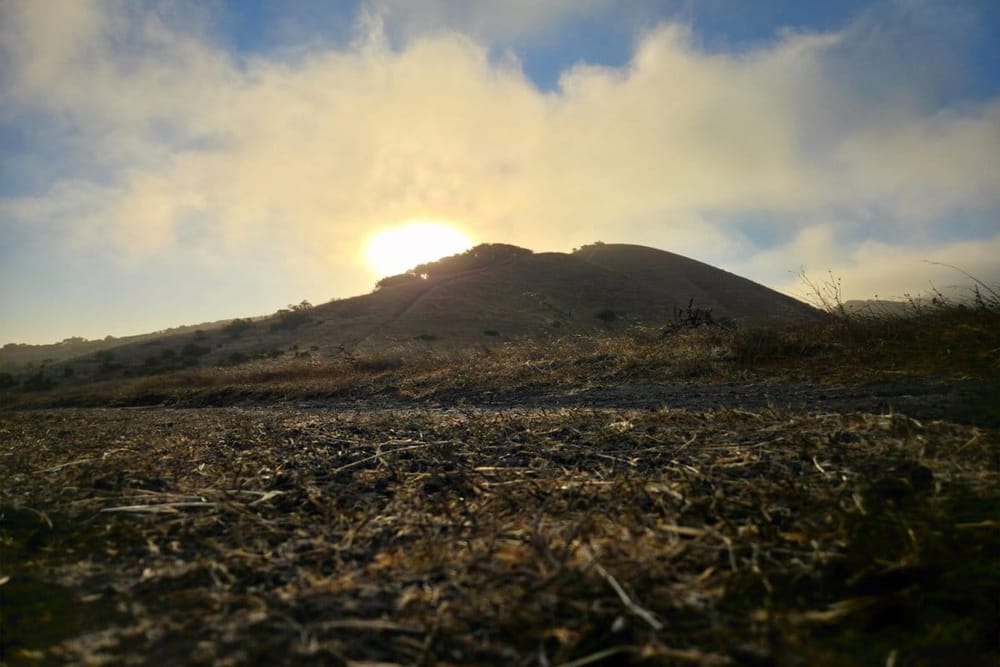Raising the Floor: Tools That Helped Me Function Again

What This Is...
Nearly ten years of me searching for the help I wasn’t getting. These are tools that raised my baseline just enough to stand, breathe, and start again.
Not healed. Not in remission. No miracle narrative. Just a steadier floor under shaky legs.
The forest taught me something simple: before you chase summits, you shore up the ground.
These are my puzzle pieces, what I found while stumbling through the darkness of collapse, grief, pain, and suffering. This is me switching on a light so you can see what's there. Take what helps to raise your floor; leave the rest.
I've included no external links by design. If something sparks curiosity, search it in your own way and at your own pace. I'm sharing trail markers, not marching orders.
This is a living document. As I remember more or the work evolves, I'll keep adding and pruning. It's been a long road. This is what I remember today.
Research That Reframed The Map
- CDC/Kaiser Adverse Childhood Experiences (ACE) Study - clear dose response links between early adversity and later health risk.
This helped me to stop moralizing symptoms, see the pattern beneath the pain, and prioritize nervous-system work, without shame.
Regulation, Awareness, Reconnection
When the nervous system is on fire, nothing else lands.
- Gabor Maté, MD - trauma ↔ illness framing
- Bessel van der Kolk, MD - trauma ↔ nervous system framing
- Wim Hof - breath + cold exposure (scale mindfully; skip if unstable)
- Sadhguru - inner stability, presence practices (take what lands)
- Master Shi Heng Yi - pragmatic Buddhist principles for modern life
- Andrew Huberman - practical nervous-system tools (sleep, light, breath)
- Dr. Daniel Amen - brain/behavior perspective (use discerningly)
Use as education, not doctrine. Try one practice at a time; keep what actually calms your system.
Metabolic Reset & Inflammation Relief
Small levers that changed energy, swings, and pain:
- Mark Hyman, MD - systems and functional framing
- Jason Fung, MD - fasting & metabolic basics
- William Li, MD - food for cellular repair
- Pradip Jamnadas, MD - fasting and insulin resistance, gentle on-ramps
- Philip Ovadia, MD - metabolic health made practical
- Aseem Malhotra, MD - cardiometabolic risk; insulin-resistance clarity
- Annette Bosworth, MD - keto and fasting tactics for stability
- Valter Longo, PhD - fasting-mimicking diet and longevity framing; cautious, nutrition-first approach
- Dhru Purohit - curated metabolic and lifestyle conversations you can apply
- Jessie Inchauspé - practical strategies for blood sugar regulation
Test gently. Track sleep, mood, and flare length - not just weight or macros.
Elimination & Food-As-Function
Experiments that clarified triggers, plus some implementation support:
- Paul Saladino, MD - animal-forward elimination nuance
- Ken Berry, MD - low-carb/elimination support
- Shawn Baker, MD - carnivore as a temporary calm tool
- Thomas DeLauer - approachable fasting and keto implementation
- Lillie Kane - practical keto and carnivore education for real life
- Rina Ahluwalia - real-food, elimination-friendly meal ideas (use what fits)
- Bobby Parrish - label literacy & low-additive grocery strategy
Do not moralize food. Use it as data. If your body steadies, you’ll know.
Micronutrients, Epigenetics, Root-Level Intakes
Where small deficits created big noise:
- Rhonda Patrick, PhD - micronutrients & inflammation
- Lucia Aronica, PhD - epigenetics & expression
- Georgia Ede, MD - nutrition & mental health
- Terry Wahls, MD - mitochondria-focused inputs
- Shebani Sethi, MD - metabolic dysfunction & mental health.
If labs or symptoms hint at gaps, shore them up slowly and retest.
Movement That Resets Without Destroying
Capacity first, expression later. What got me moving again without backlash:
- Movement by David - gentle daily mobility
- Squat University - alignment & pain prevention
- Strength Side - strength and mobility for real bodies
- Knees Over Toes Guy - longterm flexibility and mobility for life
Going brief and targeted everyday is what builds capacity... Don't do heroic workouts you can’t recover from.
Strength, Longevity & Performance Science
Scaled to the body I have now, not what I think it should be.
- Gabrielle Lyon, MD — “muscle as medicine”
- Peter Attia, MD — longevity levers & protocols
Translate their big-engine advice into your current bandwidth. Your dose is your dose.
The Tools That Slice Through Noise
Not all data you find online is good, relevant, or even applicable to your case. Learn to filter like your life depends on it. Check primary literature to sanity-check claims. Seek opposing viewpoints to escape echo chambers. When the takes get loud, these are the places I check before changing anything:
General
- Examine - clear summaries of nutrition/supplement research
- AAFP: Drug-Nutrient Depletions - meds that drain nutrients
- Cochrane Library - systematic reviews
- John Campbell, PhD - plain-language walk-throughs of studies and public-health claims
Specific Topics & Resources
- AAFP: Hypertension - clinical practice guidelines
- Arthritis Foundation
- Barrett's Esophagus - American College of Gastroenterology
- Intracranial Hypertension Research Foundation
- Lupus Foundation of America
- Standing Up to POTS (Postural Orthostatic Tachycardia Syndrome )
At the end of the day—None of this replaces your own body’s data—sleep, pain, flare duration, and how the trail actually feels.
Foundational Documentaries That Move The Needle
Note on Documentaries: Not anti-pharma—pro-agency and informed consent. Medications are often necessary. The point is to understand trade-offs and approach them with clear, eyes-open awareness. Ask better questions, keep your priorities in sight, and work with a clinician who respects your pace.
- Cereal Killers (2013) - Challenges fear of fat and the old nutrition script we were all taught.
- Run on Fat: Cereal Killers 2 (2015) - Low-carb endurance as a case study; reframes “fuel” and inflammation.
- The Big Fat Fix (2016) - Simpler levers that matter: sleep, stress, movement, real food. Less hype, more habits.
- First Do No Pharm (2024) - Questions the medication-first reflex and industry incentives; nudges to ask better questions and prioritize basics and informed consent.
Not endorsements, just films that helped me see the terrain differently. Watch for principles, not dogma; keep what serves.
Why I Sifted This Hard
I know it’s a LOT of work just to understand what’s going on. If you want to apply what actually helps, if you want more agency over what’s happening in your body and a better quality of life - then it’s worth it. Every tiny little moment of aliveness and thriving I've stolen back from illness adds up and has always been worth it - every time.
I spent years mining each source for a single usable pearl, one small thing I could apply to my specific circumstances. Over time, those tiny wins raised the floor.
What This Is (And Isn’t)
This is not optimization or performance culture. It’s “stay upright” culture. It’s for the days when you’re still in the weeds but refusing to hand the whole day over. If one idea here helps you breathe easier or shorten a flare, that’s enough. The floor just rose a notch.
Safety Note
This my individual, personal experience, not medical or therapy advice. If something spikes pain or panic, stop. Stabilization beats bravado. Work with a practitioner who respects your pace.
← Back to Adaptive Trailcraft

Member discussion